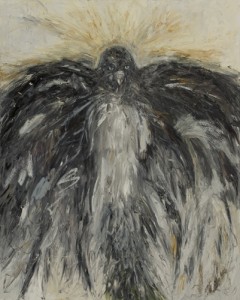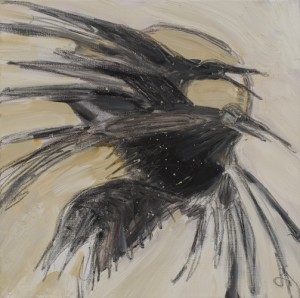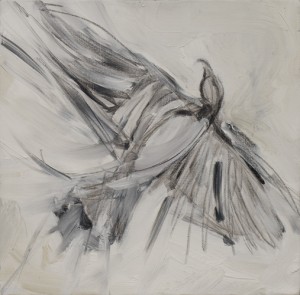Blog
Robin Robertson’s “Beginner’s Guide to Jungian Psychology”
Added September 8th, 2012 to Booksby Deborah Bryon
In “Beginner’s Guide to Jungian Psychology” Dr Robertson explains complex Jungian therapy in everyday, user-friendly language that is easy to understand even for someone who has no prior knowledge of Jung. I highly recommend this book to analysands, novices, as well as to students of Jung in training to become analysts. It is an enjoyable read of challenging subject matter!”
The Collective Expression of Pachamama
Added September 8th, 2012 to Basicsby Deborah Bryon
Serving the collective is not “collective” in terms of the culture, but rather the actual energy, the higher vibration that exists between all living things.“Collective” doesn’t necessarily mean your village or community, your family, or your country. Collective means living a life in which you’re no longer separate, you are collective. You are the land. You are the people. Sourcing from this other entirely different way so you that don’t have to deal the shortcomings of the personal, which is your “self” framework that carries your sense of misfortune, love, money, or work. Collective means the makeup of light, or fertility that supports you, that “you can grow corn with.”
What does Pachamama do and Why is She Important?
Added September 8th, 2012 to Basicsby Deborah Bryon
A reciprocal, or “right” relationship develops and is maintained between shamans and Pachamama, serving as a functional gateway between ordinary and nonordinary reality. Inca shamans connect with Pachamama, the collective expression of the land using the energy centers in their energetic, luminous body, the conduit into experiencing energy. By connecting with the land through their luminous body, the land becomes the medium the shaman uses to shift from personal experience into accessing the universal state of collective connection.
Who is Pachamama?
Added September 8th, 2012 to Basicsby Deborah Bryon
Pachamama is the word for “mother earth” or “the great mother” used in Peruvian shamanism. In Peru, everything in life begins, exists, and ends in direct dialogue and communion with Pachamama, the collective of the land itself. The land exists both inside and outside of time and space, as spirit and matter. The natural world is an expression of Pachamama what is born from the land and is returned to the land, in an ongoing cycle of death and rebirth. Pachamama is the existing energy field between all living things and is the source of the shaman’s power.
Basic Terms and Definitions in Inca Shamanism
Added September 3rd, 2012 to Basicsby Deborah Bryon
Apus – referred to as “winged beings; the collective mountain spirits.
despacho – an offering to Pachamama or the Great Earth Mother. It is a circular arrangement, or mandala, embellished with k’intus (prayer leaves), grains, candy, and other colorful symbolic objects representing the lower, middle, and upper worlds.
energetic collective – the essential level of spirit
Hanaq Pacha – the upper world
illa – creation
k’intus – leaves holding prayer, a group of three leaves holding intent
kausay – the energy of creation
Kay Pacha – the middle world
kuya – a stone that is part of a shamans’s mesa
mesa – a collection of individual stones assembled over time that are a living representation of a shaman’s medicine body.
munay – universal feeling of love
p’aqo – a medicine person
pacha – an intersection of time and space that contains kausay, or life energy, that is a significant marker in a person’s life
Pachamama – Mother Earth
tupay – resolving and healing conflict through working with one’s mesa
Uhu Pacha – the lower world
waka – a power spot in nature
yanai – clear vision
The Basic Need for Creativity
Added September 3rd, 2012 to Therapy practiceby Deborah Bryon
Carl Jung listed creativity and reflection as a basic human instincts, along with hunger, sexuality, and activity. Growing up in this culture we learn to develop ways of fulfilling our needs related to hunger, sexuality, and activity. Academia teaches analytic thinking and with it mentation – the ability to think about thinking. Yet fostering creativity in and of itself often falls by the wayside. Classes that sponsor creativity are treated as “electives” in public education, and are usually the first to be cut with budget constraints. In elementary school, learning to color within the lines is often “graded” better than spontaneous creative expression. Only a fraction of us (about 10% of the population) – who are predominantly artists and people with deviant behavior patterns – are left handed, and right-brain dominated. Although Gardner theorized that there are seven areas of “creative intelligence,” traditional intelligence tests measure Verbal and Performance IQ. Processing speed is measured but a creativity quotient is not in the mix.
Creative expression is essential to psychological and spiritual well-being. Although creative development is not a priority, a disconnection from creativity is often what brings people into therapy, psychoanalysis, and off on spiritual quests. Creative expression provides a venues for spiritual connection, and a way of deepening our understanding with ourselves. It is a means for engaging in an inner intuitive dialogue, a way of knowing.
So how does one learn to express themselves creatively when it seems like a foreign language? How does creative expression begin to feel authentically energizing? One of the ways is through active, automatic practice. When we do something automatically, it is done without thought. The Abstract Expressionist painters used automatic painting as a gateway to the unconscious. They avoided a logical approach to art and opted instead for movement based upon unthought expression. The “action painters” painted through gesture, with little regard for image or outcome – they stayed true to the process. The record of their experience was more important than the outcome. Action brings understanding.
This automatic creative process also occurs in shamanism when we “feel” our way into something with our bellies rather than using the sequential logic of our minds. We allow the creative process of spirituality to lead us rather than vice versa. Our connection to something greater – is what informs us – and brings with it a state of deeper knowing. We experience and then draw meaning from the experience.
Meaning and Connections to the Inner World
Added August 23rd, 2012 to Therapy practiceby Deborah Bryon
An ongoing topic that comes up frequently in psychotherapy and psychoanalysis is, “What is the meaning of life? Or – even more importantly – how do I find meaning?” Through his experience living in a concentration camp during Nazi Germany, the existential psychologist Victor Frankel discovered that a sense of meaning gave people a sense of hope and was the main factor in whether or not they had the will to live. If we feel connected in our inner world, we have a much greater tolerance of adversity in the outer world. The question becomes, “What is meaningful and how do we find it?” Meaning is something we embody – it is not someone else’s algorithm that we can conveniently plug into. For most of the people who come to see me, adopting someone else’s religion doesn’t work.
Meaning is an emotional state linked to an inner “knowing.” It is the actual experience of connecting to something bigger than we are, or a sense of feeling at home or well-being. For others, it is passion that brings purpose and commitment to something greater. Meaning also comes about through feeling altruism and gratitude, with a desire of giving back. Meaning can be a connection with either the inner or outer world, depending on personality preference and tendency toward introversion or extroversion.
Meaning is frequently experienced as a “felt sense.” Cognitive understanding does not bring meaning although it may be a way of describing it. Meaning is first experienced in the heart and body. Clients have asked me, “So then how do I find meaning?” It is my understanding that finding meaning is often about cultivating a receptive attitude.
In the bimonthly women’s group that I facilitate, recently I have been observing an emerging phenomenon. Some of the women, returning from summer travel have announced that they plan to move to where they have just come back from – in a search for meaning. Is it necessary to step outside of our life to reset in our inner world? Do we need a different vantage point when we feel stuck? Maybe – but not necessarily. Sometimes it is easier for us to get caught in reifying or concretizing experience and harder to bring the spirit of the energy back and integrate it into our daily lives – or as shamans say, “Grow corn with it.”
When we are in the afterglow of an experience, it is important to treat the experience as sacred rather than trying to force symbolic interpretation. The afterglow must be kept alive, cooked, and nurtured. By waiting for the experience to coagulate in our psyches we offer it the opportunity to develop organically and grow as it needs to. Living in Western culture often requires toggling between two worlds – the practically of the day world with the realm of dreams and vision. Ideally the visionary world will begin to inform the day world, giving it life and color – and meaning. The hardest part of this process is sitting with it and giving it time. This is how we claim it and make it a part of who we are.
Faces of the Winged Beings Exhibit
Added August 6th, 2012 to Artwork, Newsby tom.blaschko
“Pacha Tucson’s Shadow”
Faces of the Winged Beings
Recent Paintings by Deborah Bryon
Spark Gallery August 30th – September 23rd
“The process of observation is a deepening process of awareness through which you develop a clear heart and become a beacon of your own light. Pure observation leads to pure awareness, through holding space with the collective and becoming a steward of your own journey.”
(Apu Chaupi Orco, 2011)
Opening Reception: Friday – August 31st – 6-9 pm
First Friday: September 6· 12-9 pm
Coffee with the Artists: Sunday – September 23rd 1-4
Spark Gallery · 900 Santa Fe Drive · Denver, CO 80204 ·
Gallery Hours: Thursday 12-5 pm · Friday 12-9 pm · Saturday 12-5 pm · Sun 1-4 pm
www.deborahbryon.com
SparkGallery.com
“Flight”
Faces of the Winged Beings
Artist Statement
It is time for the voices of the ancient ones to return. The vision of the Apus is a return to the land. They have been the keeps of the ways of living, an evolution of a new collective. (Conversation with Dona Alahandrina, Altomesayok, July 2011)
This body of work is a reflection of encounters with the “Winged Beings,” while studying with Altomesayoks, Inka shamans living in the Sacred Mountains of Peru. Engagement at the mythic level has been explored through symbolic imagery. Painting has been a process of recapitulation, a way of circumambulating around memory to deepen meaning, shifting energetic experience into physical form via implicit knowing. The Winged Beings, or Apus, are mythic expressions of collective mountain spirits. They are different from angels in that they are part the living earth, Pachamama – not heaven.
“Winged Being”
“In ceremony, the Altomesayoqs have acquired the energetic capacity or power to call the Apu mountain spirits into actual physical manifestation. Through their capacity to contain energy or hold space, they serve as a gateway for the aspects of the spirits to emerge. They enable others who are present to enter into direct dialogues with the Apu spirits. The voices and energetic quality of the aspect of the Apu that appears reflects the temperament of the Altomesayoq who is serving as the gateway. While sitting in ceremonies with different Altomesayoqs, I observed the energy and the voices of the Apus shift from one of sweet benevolence to one of booming force depending on which Altomesayoq was performing the ceremony.(“Piercing the Veil: Lesson of the Inca Shamans,” Bryon, 2012.)”
Shamanic Healing in Psychotherapy
Added August 6th, 2012 to Therapy practiceby Deborah Bryon
Maintaining the energetic connection in shifting from collective experience back into daily living requires intent through practice and daily ritual. Living in the modern world, I have learned to work the sacred link during dreamtime. I fall asleep holding quiyas stones from my mesa, as I transition into deeper layers of the psyche from conscious to dream states, moving into and reaching for connection with the winged beings and my allies.
During the day, I speak with them continually as I am working with clients, asking for their guidance and direction. I do not question their input but work with it as it is given to me. They often bring me images of patterns that are playing out in clients’ lives, or show me how to work with the client to move energy in their body. Sometimes what I am being shown doesn’t always makes sense to me, but I have learned to trust the information I am given. Occasionally I am shown that a client is being weighted down and needs to drop into the weight in their bellies. Sometimes, I am given verbal information about a client’s lineage, about a pattern that has been passed down through generations in a family. I try to explain to clients that identifying how they developed a wound or negative pattern is not about assigning blame. Usually the person that passed it also received it from someone else that came before them. Although healing often comes through acknowledging feeling that has been unexpressed, there is often something to be gained from going through the experience, greater strength or insight.
Frequently, I am able to see the client’s wounding from a bird’s eye view. In working with analytic and psychotherapy clients, I must be able to see them in a healed state. Yet the overview only provides the map for healing – it does not bring about the healing itself. It is equally important to experience connection with a client by experiencing heart-centered compassion for what a client has been through, while at the same time holding the vision connection of the healed state. I feel what a client is feeling, that surfaces as they are telling their stories but I do not try to remember the details of the stories themselves. The details are relevant only in that they are what the feelings are often attached to. Sometimes a client will need to tell their story repeatedly to stay connected to the feelings. Feeling the feelings brings compassion, forgiveness, and understanding. In these kinds of feeling states, clients are finally able to let go of the past and move on. Then they are no longer claimed by past life events and are able to become open to new experience.
Finding Meaning in Interconnectedness
Added August 5th, 2012 to Basicsby Deborah Bryon
As I grow older, it becomes clearer to me that as human beings we have an inherent need to make meaning in our lives. Based upon my experience as a psychologist and a Jungian analyst in private practice, working with people are in the process of deep soul-searching, finding meaning is the single most important reason for living. Meaning comes through connecting with something that is bigger than us that we experience through our engagements in our inner and outer worlds. It comes about through play, expressing our creativity, and exploring spirituality. We often sense deeper meaning through being in nature or sitting quietly in meditation. Meaning is also found in altruism, by “giving something back.”
In the West, we often attempt to make meaning by engaging with new ideas, establishing important goals, developing our personal and professional identities, and through formulating our own individual belief systems. Depending upon a proclivity towards introversion or extroversion, our attention either is focused on activities out in the world or on centering and reflecting internally. Our understanding of connection is determined by our own personal nature and the life events that come our way — and the way we understand these experiences using our minds.
Making meaning also occurs through being in relationship with family, friends, animals, communities. In the case of Q’ero shamans, making meaning happens through experiencing the connection with mountains, in a state of connection, using their hearts.
My own personal quest for meaning led me down the path of becoming a stockbroker, then an artist, psychologist, and Jungian analyst using my mind. Finally, my search for meaning led me to the jungles and mountaintops of Peru, to work with indigenous shamans in the Andes Mountains. In Peru I learned to use my heart to make meaning. Shamanism is a way of the heart – and through heart connection, one finds meaning.
According to Inca cosmology, meaning is made by being in ayni (right relationship), or munay (unconditional, universal love) with the collective. In shamanism, the definition of “collective” is much broader than how it is generally understood in modern Western culture. Besides referring to “mass culture” and society, the term collective refers to the energetic relationship that exists among all living things. Shamans experience the collective through their hearts and in their bellies using a “felt sense,” instead of their thinking function.
For shamans, this includes Pachamama (Mother Earth), plants, animals, and humans living in the physical realm, as well as the Apus (the great collective mountain spirits) and Santa Tierras (feminine spirits residing in the earth). As this blog continues, I will say more about these interconnections and the shamans who work within them.


